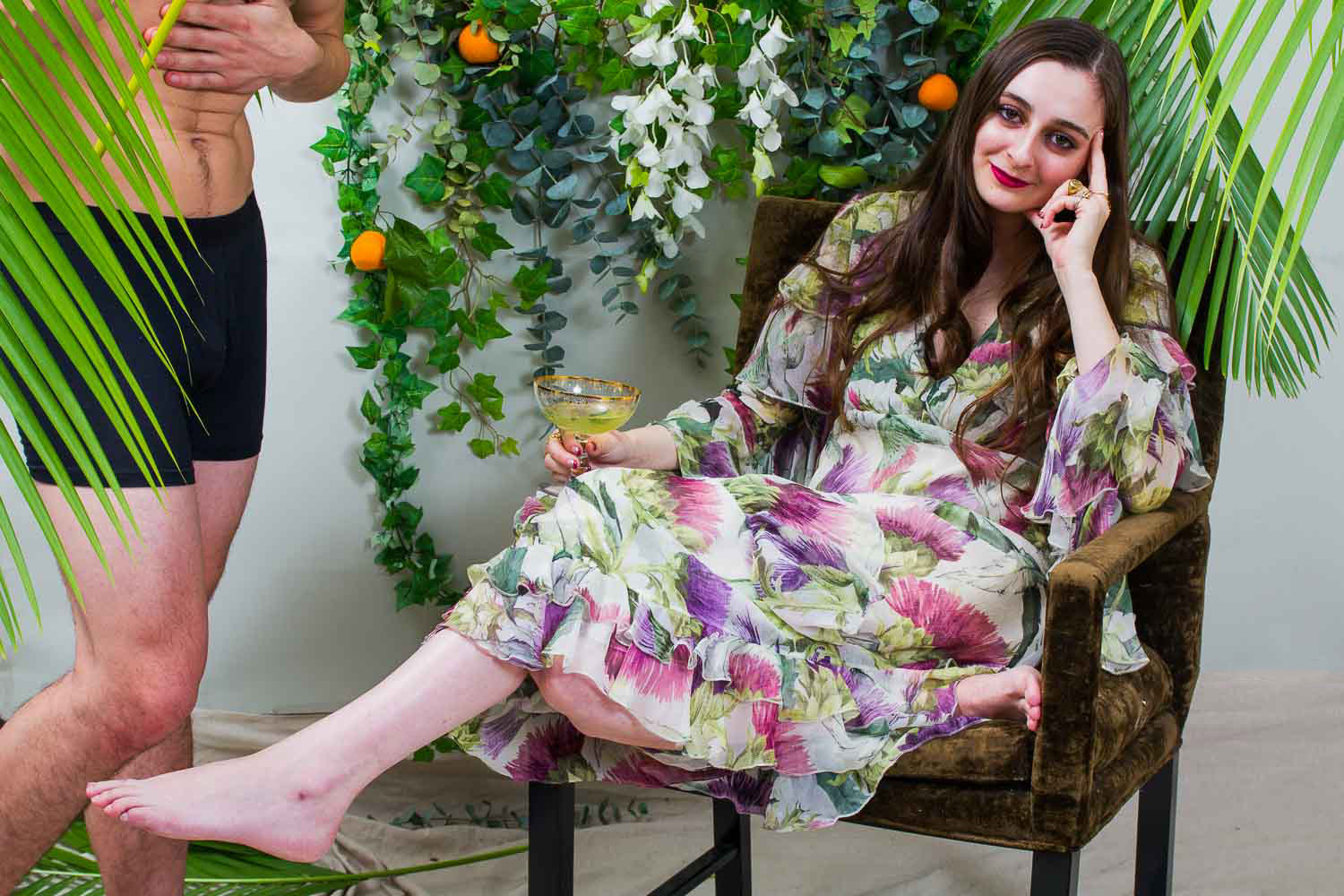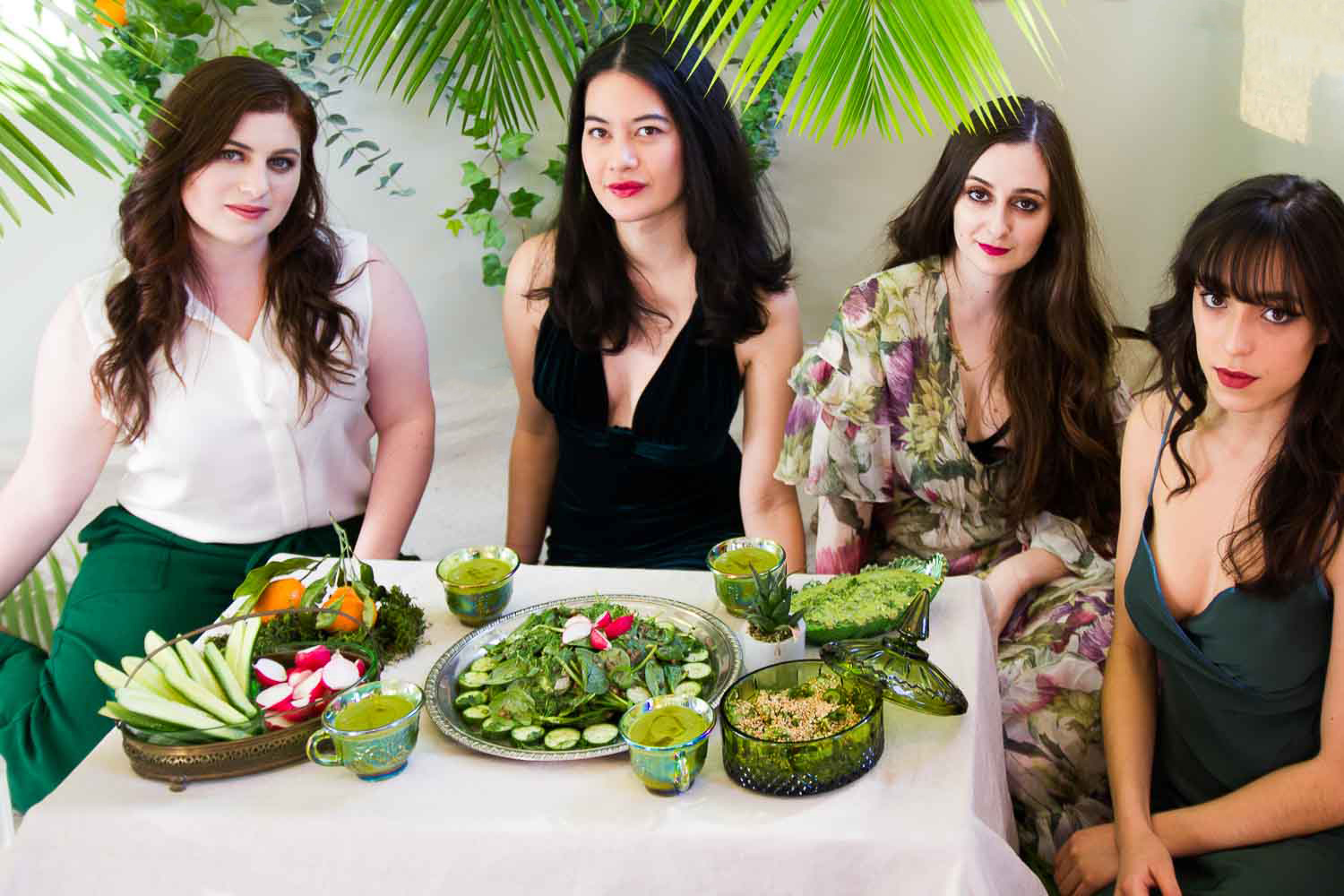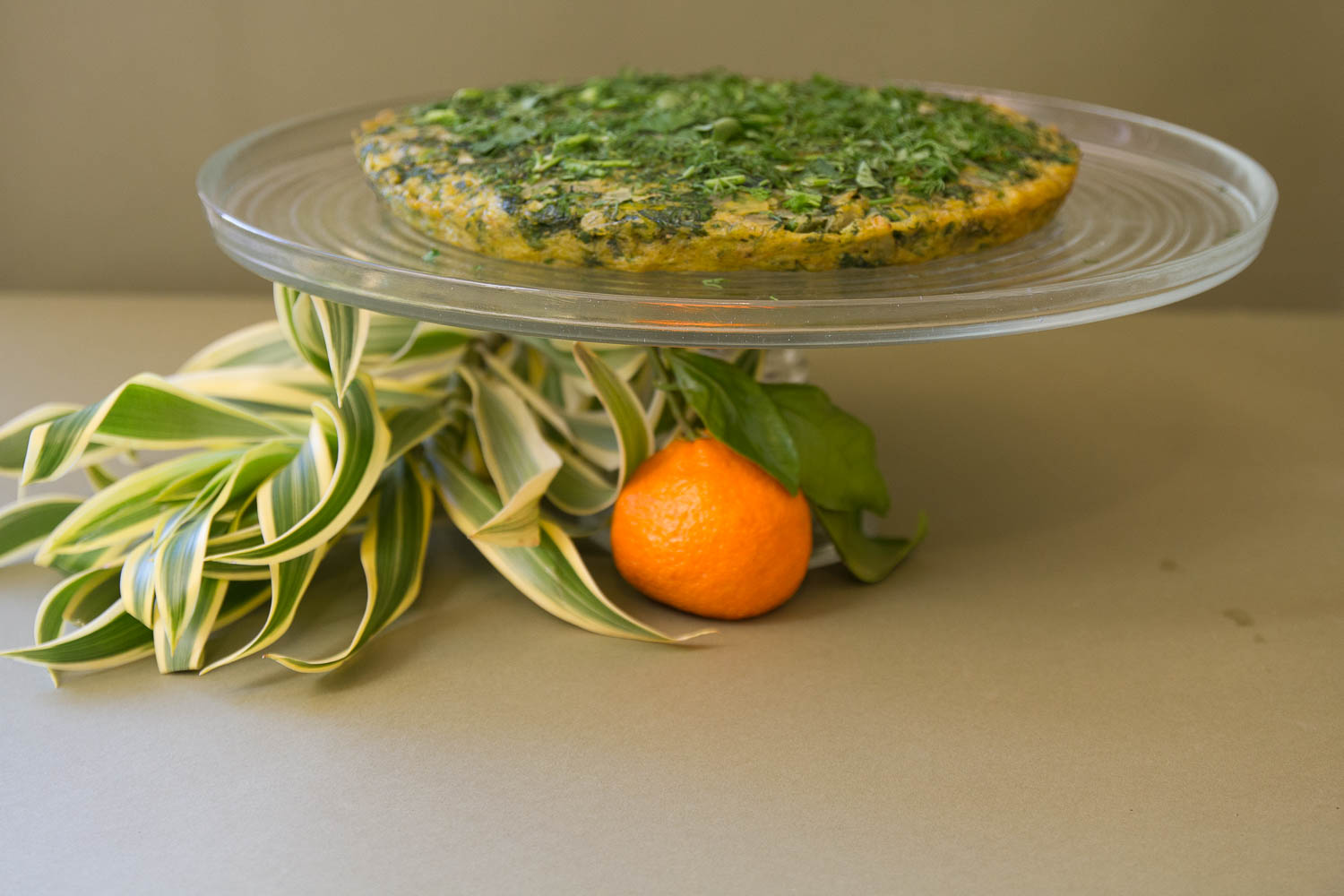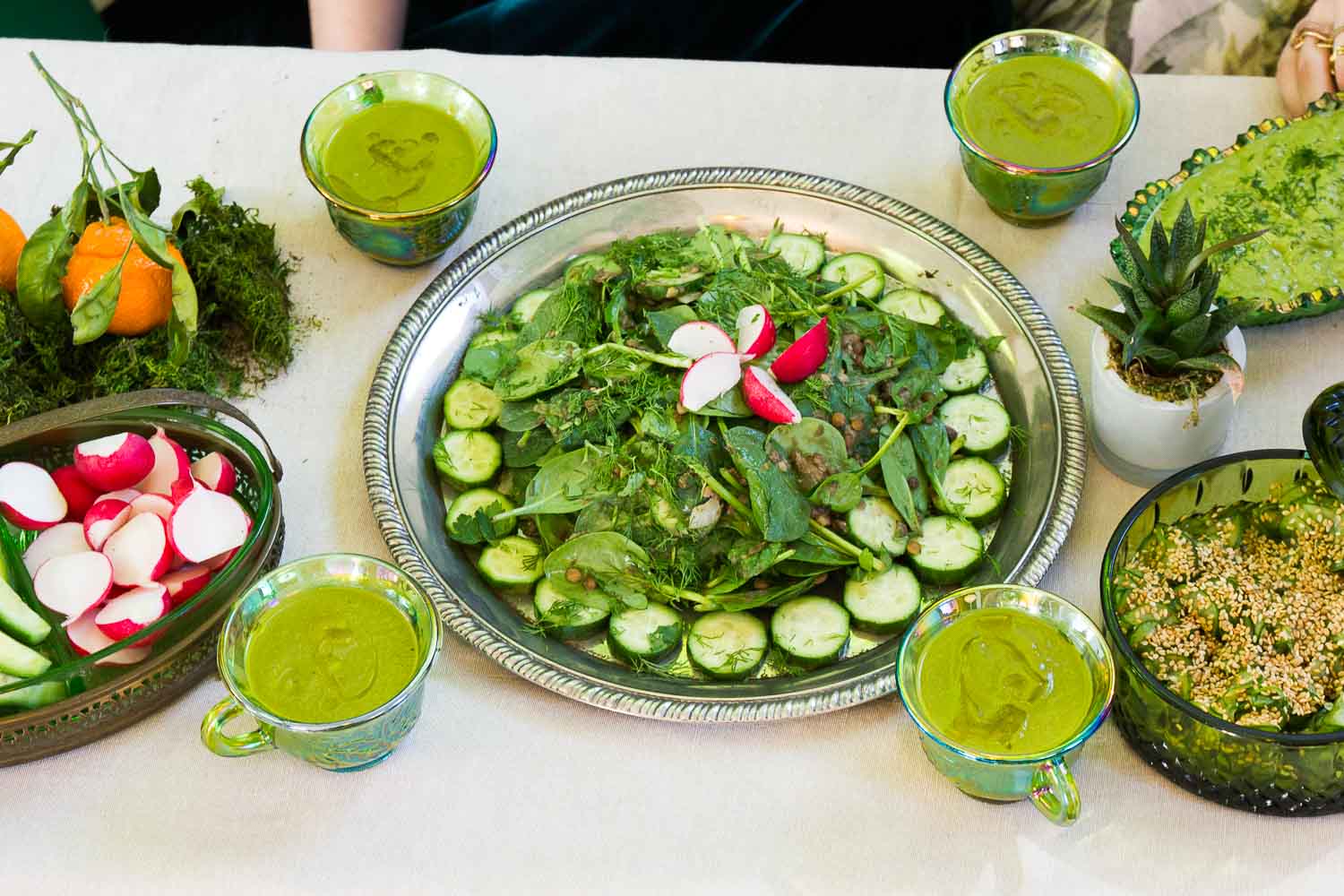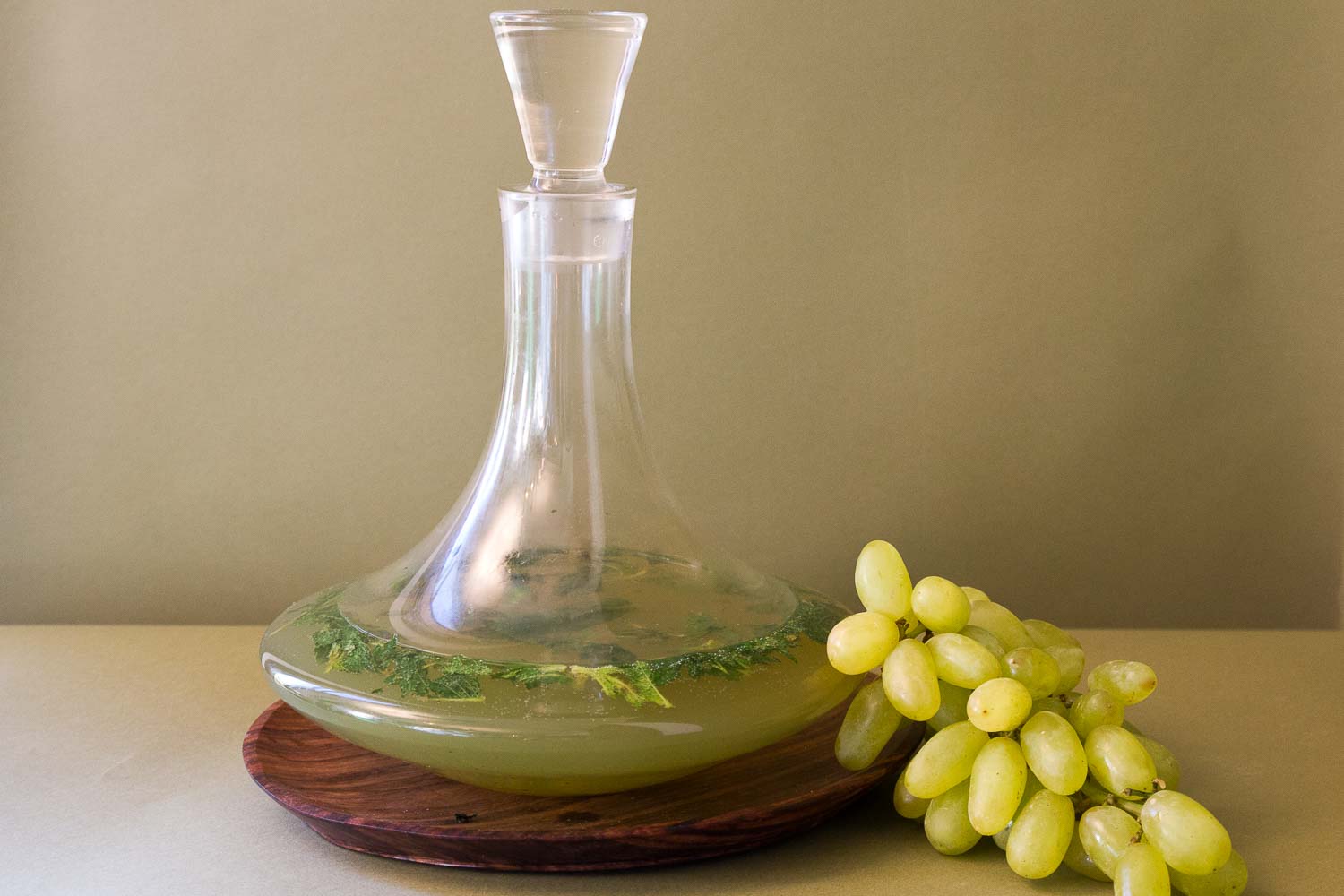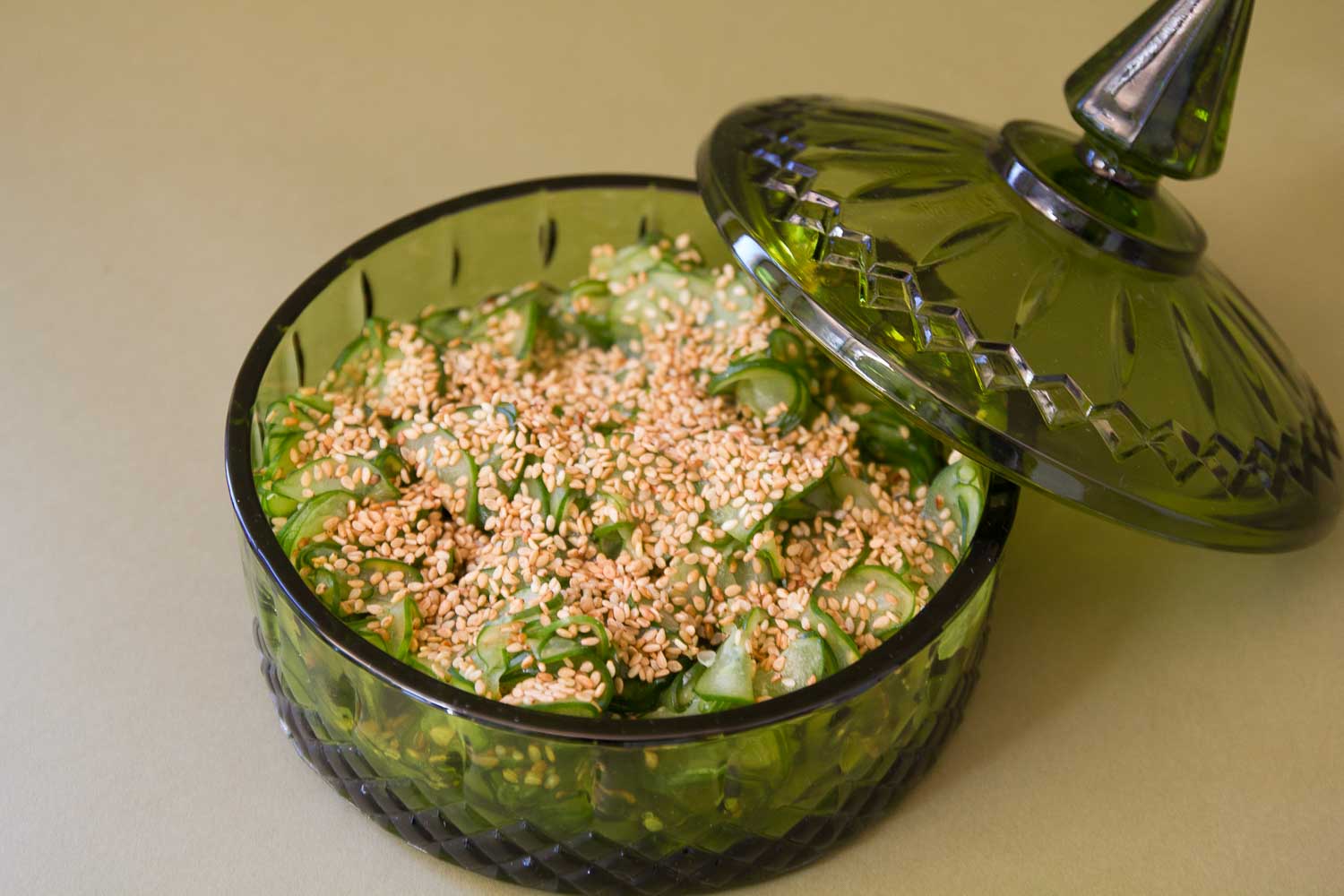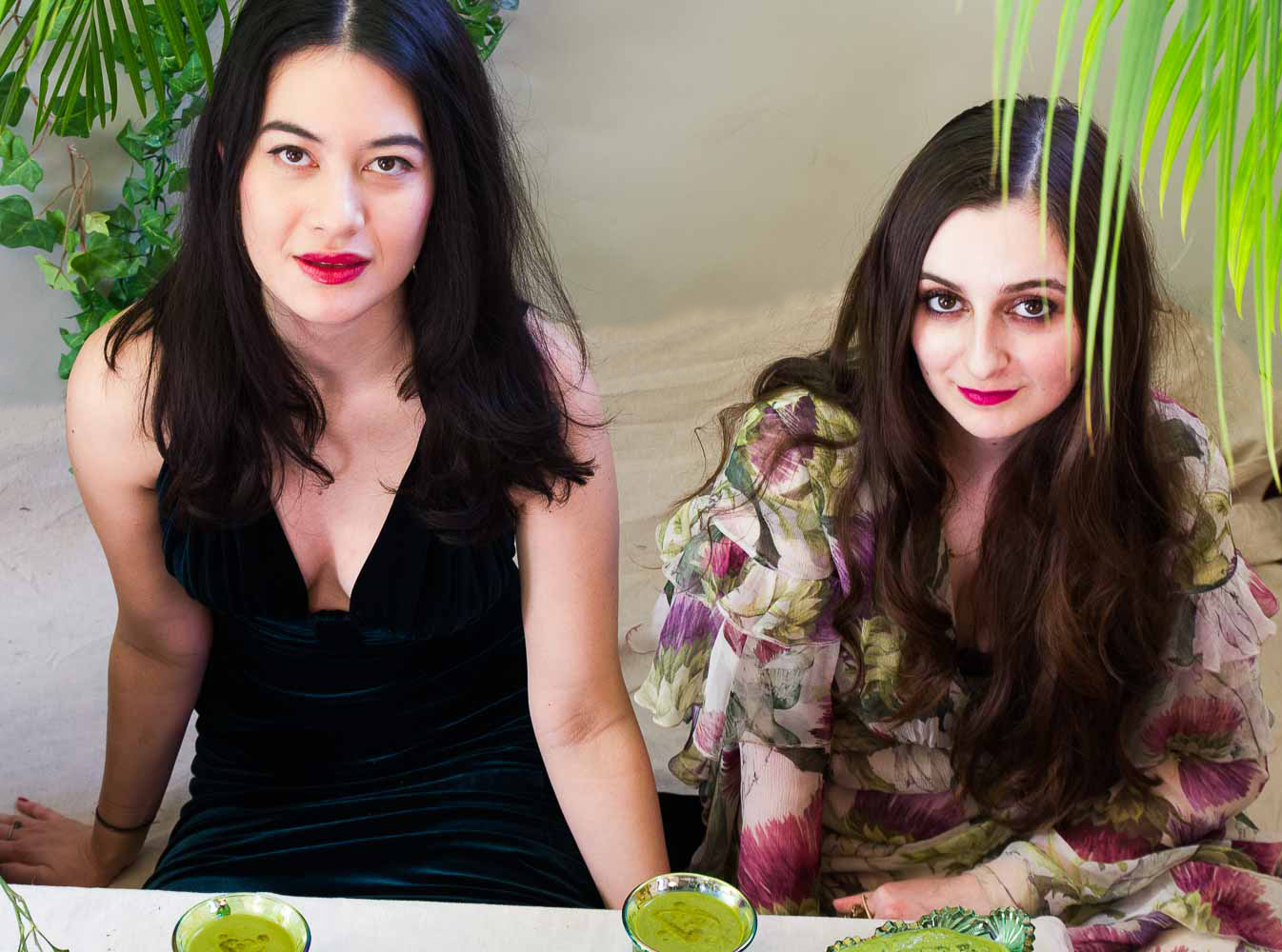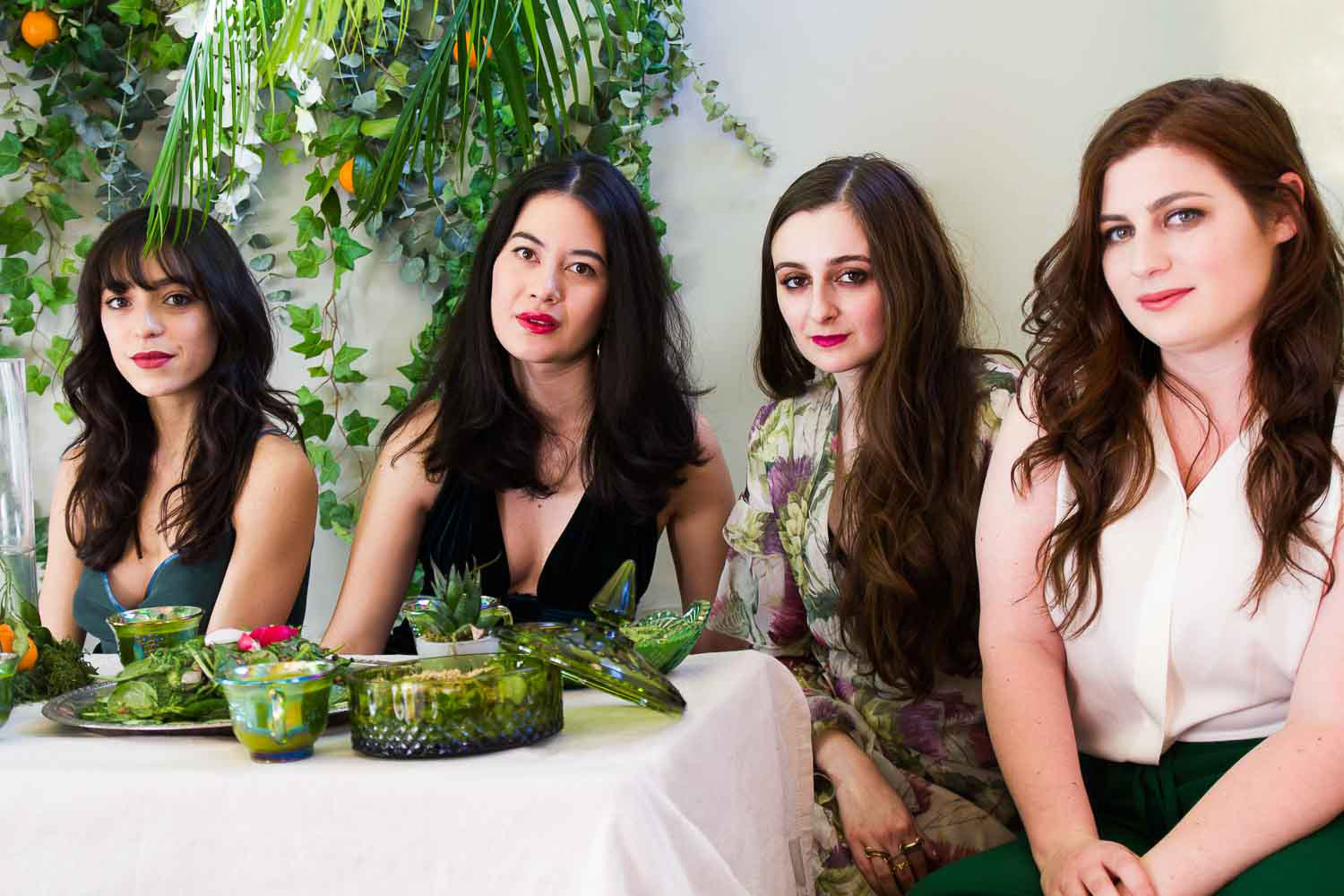Green Dinner Party:
The Conversation
Transforming Margot's Bushwick apartment into a tropical garden, we invited our loosely connected group of dinner party guests to dine and discuss this issue's color theme.
Crank up the heat, gather your potted houseplants and join us for a picnic inspired by the Garden of Earthly Delights.
Note from the Editors:
A question we hear a lot from our readers is how do we choose the guests for our dinner parties. Our intention has always been to create a network where women and non-binary people can come together in conversation. The vehicle for these conversations is dinner parties and, more simply put, food. We strongly believe that food and conversation is a universally binding ritual of the human experience. Nothing helps tough conversations get going better than a warm meal and flowing vino.
These conversations are meant as a starting point, a forum to share ideas and learn from the experiences of others. We hope that by sharing our discussion with you, it will help start ones of your own.
Seven Degrees of Helen America
HELEN AMERICA IS THE EDITOR-AT-LARGE OF THE KLEAN. SHE MET ERIN IN 7TH GRADE AND HAS BEEN FRIENDS WITH HER SINCE. ERIN AND HELEN AMERICA WERE BOTH A COUPLE OF YEARS OLDER THAN LAUREN, WHO WENT TO THE SAME SCHOOL, AND IS FRIENDS WITH HELEN AMERICA AND HER SISTER. MARGOT, THE EDITOR-IN-CHIEF AND FOUNDER OF THE KLEAN, WAS AT A BARBEQUE IN BROOKLYN, WHERE SHE MET JADE, WHO AS IT TURNS OUT, WENT TO COLLEGE WITH HELEN AMERICA.
WHAT DO YOU THINK OF WHEN YOU THINK OF GREEN?
Helen America: So, for everyone’s full understanding, the green ball started rolling a few weeks ago when I was reading an article about iconic costumes in modern film. One of the costumes featured was the green dress that Keira Knightley wore in Atonement - a beautiful dress, but it was interesting because in the article, the author quoted someone talking about the fact that, in film, female characters often wear green when they’re being made to communicate to the audience negative feelings. Apparently, it’s a deeply uncomfortable to look at when worn by a woman. I found it fascinating that “evil” women wear green - it’s something I can’t unsee! And now, here we all are, fabulous in our own green outfits.
Personally, when I think about green, I think about Eve, snakes, poison, and the Renaissance.
Lauren: When I think about green, I think about money in particular-- I’m constantly reminded about the ways in which socioeconomic status can be intertwined with class. What is also important to note is the connotation between green and money is something distinctly American, as our currency is printed on green paper, whereas other nations use multi-colored currency or coinage more broadly.
Helen America: It’s right on that you mention money and America, because so much of the way that we as Americans treat money is distinct to our country and culture. Envy in regards to money and socioeconomic status is something that I consider to be very American in that Gordon Gekko, Wall Street (any coincidence that geckos are green lizards, too? Oliver Stone, want to chime in? Ha!), “Greed Is Good,” way.
Lauren: Finally, when I think of green, I think of envy and how that emotion drives in many cases negative behavior, but more broadly, when I think of envy, I think of women, not men, as the emotion is commonly associated with women being envious of one another for many times physical attributes (she’s skinnier/prettier/more attractive (and therefore more men are interested in her). The only exception I have seen this is in Shakespeare’s Othello, when Iago, the antagonist says, “Oh, beware, my lord, of jealousy!/ It is the green-eyed monster which doth mock/The meat it feeds on.” (Act III, Scene 3). But note that Shakespeare here used jealousy in the context of men, not envy. I feel this distinction is important in the ways in which we perceive language. While I have heard many times, “she’s green with envy,” I don’t think I have ever heard the word envy used in regards to men and feelings of jealousy.
I just looked up the etymology of envy which comes from the French word, envie, which came from the Latin word, invida, which means “to look upon with malice.” Notably, Mark Twain as well had maxims about envy, most famously from The Mysterious Stranger, “to be envied is the human being’s chiefest joy.” I don’t know how to grapple with this, in a sense, painfully true concept that many of us (even myself at times) desire others to be envious of me. I’m not sure if anyone else have experienced these feelings or experiences before.
Jade: Thinking about green reminds me that my name is also a shade of green-- something that I often don’t think of on a daily basis. I’m only reminded that Jade is also a color when someone asks me for my name (usually when I’m ordering food or introducing myself for the first time), I respond with Jade, and they repeat back to me either Jane or Jay. This is where I then clarify that my name is Jade, like the color. At the same time it seems like the confirmation of my name often leads to another confirmation-- my ethnicity. There often is a follow-up comment ranging from “What a cool name!” to “Totally knew that you were Asian! What kind?” *CRINGE*
Helen America: Yikes.
Helen America reaches for some crudité. Persian cucumbers are where it's at.
Jade: Jade, as the semi precious stone has a historical significance in Chinese culture; known as yu, it has not only precious value, but also social and spiritual value (used in ancient rituals to connect earth and heaven and ward off evil spirits).
Most people don’t know much about the historical aspect, but do make the cultural connection. I guess it’s human nature for people to want to identify one another by few key details-- that being name, gender and ethnicity, even if such categorizations can be reductive. I’m totally proud of my name, and my culture-- both are integral to who I am, but not what I am.
Helen America: Which is interesting too, Jade, because for you green is both the most natural thing (your name), which it is for a lot of people - green is the color of nature! - but it’s also the most unnatural thing, right? If somebody’s skin is turning green, it is a very bad sign, because it’s unnatural and they’re probably dying. When food that didn’t start out green goes bad, it turns green with mold. During the Renaissance, if the subject of a painting was dead at the time the painting was made, their skin is made green to symbolize that. However, at the same time, when someone is new to something, we say that they’re “green” to it (horses are literally categorized in a “green” division until they’ve gained enough competition experience to be called otherwise).
Lauren: But while the color green has all of these negative connotations to it, such as sickness not just in the Renaissance period as Chloe pointed out, and also in Ancient Greece green represented bile and sickness too, green also has many positive connotations. Spring and ideas of renewal in particular are what come to my mind as we’re approaching the spring.
Erin: It’s interesting there are so many contrasting ideas about the color green, especially when it comes to gender. It makes me think about The Wizard of OZ. The Wicked Witch of the West is portrayed as an evil woman who seeks to destroy Dorothy and claim her dead sister’s magical ruby slippers. We of course think of her as the antagonist in the movie, but sometimes I think of The Wicked Witch of the West as a sad character who is misunderstood, and wants revenge on the girl whose house killed her sister and stole her shoes. (Maybe if the wicked witch of the west was a green man instead, the plot line would have been more complicated because a man seeking revenge is a storyline audiences love to support.) So far green in The Wizard of Oz is consistent with the ideas of jealousy and sickness in regards to women. But when we think about the Emerald city we are meant to think of it as a place of thriving prosperity and wealth and it’s all because the Wizard lives there, even though the wizard (unlike the witch) turns out to be a bumbling idiot that can’t help Dorothy and her friends at all. Thus pointing again to the different ways the color green reacts to gender.
Helen America: I re-watched Wizard of Oz recently and not once did the distinction between the green skin of the Witch and Emerald City come to me! You’re so on point. The Wizard (WHO THE MOVIE IS NAMED AFTER!) is such a nothing of a character! I remember, years ago, in high school American History class, my teacher mentioned that the book that Wizard of Oz was adapted from was actually a really heavy-handed critique of the Gilded Age. So it really makes sense that the “pot of gold” at the end of the rainbow - the wizard in Emerald City - is a “bumbling idiot,” as Erin put it.
Lauren: Erin this is definitely something that I have not thought of. That is a fantastic comparison→ and also thinking about Wicked (the book and I guess the musical too), the author (who is I suppose surprisingly or not depending on your viewpoint, male), explains that infidelity and drinking is the reason why the Wicked Witch of the West is green, which leads to her ostracization and feelings of rage and loneliness. Also, The Wizard of Oz, particularly the Wizard (who you both aptly pointed out is in the novel for a blip), gains his reputation and superiority through hiding himself within grandeur, and he in fact is not extraordinary, or “wonderful.”
Erin: Woah! That is a horrible punishment what the hell! Being punished for infidelity by having your skin color changed to green is reminiscent of The Scarlet Letter, too. Also guys- would just like to point out that Buttercup -the green powerpuff girl- is the one who is impossible to control and has a bad attitude and temper. Coincidence? I think NOT!
The group says cheers with vintage glasses filled to the brim with soup.
What comes to mind when Green is used to refer to the environment?
Helen America: The phrase “going green” is something we say when we talk about being eco-friendly, and for this dinner party, we prepared a mostly vegan and totally vegetarian menu in an effort to be more conscious about the food footprint we have. We also found that it was much cheaper.
I personally have made a huge effort to go green, mostly in my closet. I’ve written a lot in the past about the evils of fast fashion - the second most polluting industry on earth, after oil - and how it is easy, as well as extremely cost effective, to not participate in an industry that profits off of the exploitation of mostly poor women of color. But something that’s really been bugging me is the fact that a lot of people write off the issue, I think because subconsciously, they see fashion as a “girly” or “women’s thing” and therefore it’s frivolous and doesn’t need to be taken seriously. Both from the perspective of “clothes are dumb and it’s dumb to spend good money on them” and the perspective of “there are bigger human rights offenses out there than ~*fashion*~.” I see so many of my “woke” friends now starting to say that “H&M is cancelled!” after their lawsuit with the graffiti artist REVOK but they’ve had nothing to say about them in the past!
So I’m wondering, is there anything you do to keep your carbon footprint down? Do you have opinions about how we go about it in 2018, now that the issue has been in the public consciousness for well over a decade? Should we be moving beyond recycling and taking shorter showers into bigger steps, like going meatless?
Erin: When it comes to being more green, I know there is so much more I can do. I have a reusable water bottle and I recycle, but that does not get me bonus green points the way it might have ten years ago. I am very aware that the next big steps in being more environmentally conscious would include transitioning into being a vegan, and cutting out any fast fashion I buy. But I have a really hard time doing both of those things. My roommate once said to me, “if all of my morals actually aligned with how I behave, I would be a vegan.” I fully stand by that. There’s nothing I love more than a steak frites dinner. But these days we cannot afford to be ignorant about the amounts of water and energy that are wasted in farming meat. I have thought so much about making the change, but it seems so hard to do. It would require cooking much more, buying completely different groceries, and learning about what other foods I need to give me nutrients. It’s something that I want to do, but haven’t done out of the convenience of how I already live.
Helen America: I totally feel this. I will say - something that I’ve found is a really easy first step is simply not cooking meat at home. When I moved into my first apartment in college, I started to really cook for myself. At the time, I was nervous that, with my amateur cooking skills, I’d give myself food poisoning or salmonella by undercooking meat. Although my skills have definitely evolved, I’ve continued to abstain from cooking meat when in my own home (okay, with the exception of a fantastic cassoulet recipe that my mother passed along). It also makes instances where I eat out a little more special and considered - if I’m going to spend the time and money eating out, and especially eating meat, it should be worth it. Since I’ve moved back to LA from NYC, I’ve noticed that I eat out and eat takeout waaaaaay less - obviously, space and kitchen constraints in NYC facilitate that Seamless lifestyle - and I think it’s been really good for my carbon footprint. But I will never give up my precious beurre français.
Jade: Going green in terms of the clothing and food I buy has definitely been an area where I often feel guilty about the gap in where I know I should be putting my money and the reality of where I put my money due to convenience/strict budget. I’ll admit that I am a frequent Zara shopper--its bad, like REALLY bad. Not only do I find myself in the store a couple of times a month, but I am also constantly on their site refreshing to see what new items of fast fashion they have produced through unpaid workers or copying independent artist. It’s SO BAD!!! I feel like I’m really confessing a sin right here. But this is really something I have been trying to reconcile-- the fact that Zara is SO GOOD at producing the styles that I want to wear at a VERY reasonable price with the fact they only way they can make these pieces at such low cost is because they are notorious for not treating workers well and paying them fairly.
I have been trying to make small steps out of this Zara-hole and shop at brands like Everlane and Reformation, but at the same time I’m still a bit suspicious of these brands (a rant for another time). But what is the solution? I have this fantasy of learning how to use my mom’s sewing machine and making my own clothes-- maybe even forming a little sewing circle with a group of friends-- but WHO HAS THE TIME?!!?
Erin: I work a lot with children (usually ages 6-11) and what I am seeing more in this young generation is vegan kids. This of course is the result of vegan parents, but being in a classroom where at least 4 kids in the room are completely vegan is awesome. That just wasn’t the case when I was growing up, and it gives me a little hope that the generation of kids that are being raised now will be better than the one before. Also hearing a seven year old explain to me why I should be a vegan, and how its not as hard as I think it is, is definitely motivation to change. If they can do it I should be able to as well.
Helen America: The children really are our future! Something I will also say, that I think is really important, is that for decades, being eco-friendly and trying to fight climate change has fallen squarely on the shoulders of individual citizens. And while it is immensely important to do our part, I also think that we are at a point where going vegan or driving electric cars isn’t going to fully solve everything without the cooperation and participation of our government. So don’t read this as a free pass, but I also think that we should consider activism as being as, if not more impactful, as making lifestyle changes.
Lauren: I know I can do more to keep my carbon footprint down, mainly through the use of my car. I am from LA which is such a driving town, plus I sometimes drive to and from my college which is 40 miles away. My goal in the next year or so is to get a hybrid or electric car because I know that the driving, unless I move to the east coast, is not going to go away, but at least I can reduce my carbon footprint through using an eco-friendly car. I totally agree with Chloë--I know that my behavior as an individual would change if there were more deterrents by the government regarding pollution and excess use of electricity, gas, and food waste.
What role does food and friendship play in your life?
Lauren: As a young Jewish woman, food has always been an integral part of my life and some of my fondest memories have been around the dinner table. I cook Thanksgiving every year, and it’s a whole affair because the way I show that I care about people--from family, to friends, to significant others has always been through food. The way Chloe finally convinced me to join The Klean was over a dinner that I had actually cooked for her for her birthday. For me, I have found that I am much closer with my friends than my family, because with friends usually for me I am able to have more honest and open conversations.
Jade: Yeah, I totally agree with Lauren on her note about food bringing you closer to friends. I feel like whenever I socialize with friends, it is usually around food-- I am always looking for an opportunity to indulge in something tasty whilst also having friend time. I love dinner parties in the traditional sense-- where a friend hosts the gathering, but that requires lots of space (something that is pretty limited here in NYC). So something that a group of friends and I often do is have a “family dinner’ at restaurants with lenient BYOB policies where we frequent so much that it kind of feels like a second home (shout out to Big Wong on Mott St).
JOIN THE CONVERSATION!
We want to hear from you! Tell us the magazines that are doing it for you. Send us links! Let us know what you aren’t seeing in the media that you would want to see. Vent your frustrations with us and join the conversation. And, if you feel moved to, please reach out to us to get involved!
—KLEAN Editors


